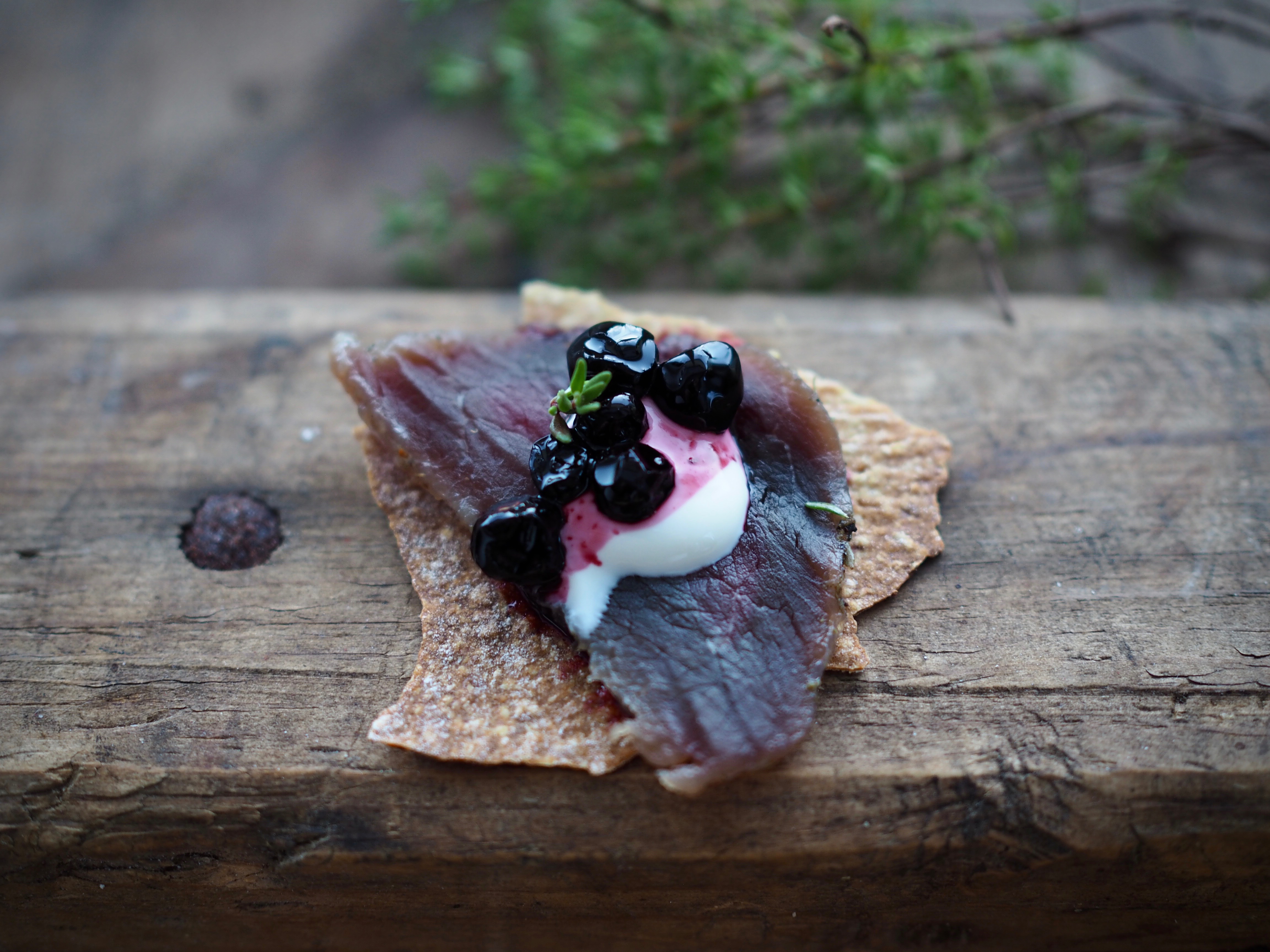
 Norway has a long tradition of curing – graving – both fish and meat in order to conserve them. While cured salmon (gravlax / gravlaks) may be more well-known, the same technique can, and is, applied to meats. Curing the meat provides a distinct flavor and smooth texture, which today is seen as being quite exclusive. Yet, it’s simple to make at home. (more…)
Norway has a long tradition of curing – graving – both fish and meat in order to conserve them. While cured salmon (gravlax / gravlaks) may be more well-known, the same technique can, and is, applied to meats. Curing the meat provides a distinct flavor and smooth texture, which today is seen as being quite exclusive. Yet, it’s simple to make at home. (more…)
Tag: curing
-

Aquavit-Cured Venison with Pickled Bilberries (Gravet hjort med sylteblåbær)
-

Gravlax with Dill-Stewed Potatoes and Mustard Sauce

 Lifting the weight and removing the board revealed a two-day culinary journey. Nothing difficult, nothing too time consuming. An act of osmosis. Curing. Transformation. And as the sharpened knife slowly pierced into the orange-pink, dill-infused delicacy, the thrill of knowing the next time step would be getting a taste reached across to everyone in the kitchen. A smooth, grainy and subtly sweet mustard sauce and a warm, hearty bowl of creamy potatoes dancing with dill to round it all off. Luxury at its finest and also its simplest.
Lifting the weight and removing the board revealed a two-day culinary journey. Nothing difficult, nothing too time consuming. An act of osmosis. Curing. Transformation. And as the sharpened knife slowly pierced into the orange-pink, dill-infused delicacy, the thrill of knowing the next time step would be getting a taste reached across to everyone in the kitchen. A smooth, grainy and subtly sweet mustard sauce and a warm, hearty bowl of creamy potatoes dancing with dill to round it all off. Luxury at its finest and also its simplest.Yet, the delicacy we know today has a much different story than its beginning. Gravlax (gravlaks) first appears in documents from the 1300s, informing us of the preservation methods used during these times. During the Middle Ages, people ate many forms of saltwater and freshwater fish that we continue to enjoy today. Salmon held a special place, valued and desired. Unlike today, where we have greater access to fresh salmon, salmon was more of a prized possession. In fact, in a well-known story about the god Tor, who is referred to as the ‘big eater’, Tor has his fill of eight whole salmon (among other things) at a wedding banquet in Jotunheimen. This gives us an idea as to the value placed on salmon and that protecting the surplus of salmon was important, and worth the risks. (Notaker, Ganens Makt)
-

Far’s Traditional Pinnekjøtt (Lamb Ribs)
Pinnekjøtt. Salty. Rich. Chewy & tender. ‘Tis the season when the year’s hard work of rearing, raising, rounding up, & preserving culminates into a grand finale. For 1.7 million Norwegians, that means pinnekjøtt. And thanks to the lovely ladies at Rollag Stasjon, I got to indulge a little bit earlier this year. They prepare pinnekjøtt from the famous spælsau from Numedal (read more about Numedal). Spælsau has grazed more on scrubland, willow and herbs than other sheep breeds, which gives the meat a more wild feel. The meat has less fat and is well marbled. Raised & processed in Numedal, it is some of the best lamb you can get in Norway. (more…)

